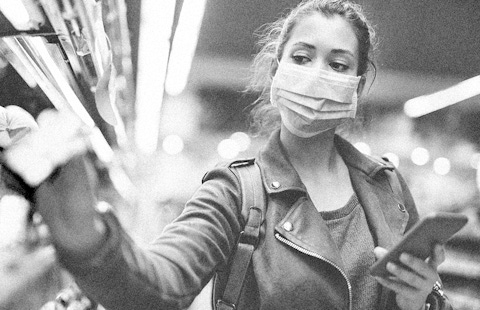
This article was originally published in AdWeek.
The nation feels so close to recovery. With each passing day, the events of 2020 feel more distant. As the nation reckoned with political disconnect, racial tension, economic plight, and a global pandemic, brands wrestled with how to stay relevant.

Eighty-nine percent of brands reported they were impacted by Covid-19, which led to pulling, pausing, stopping mid-production and even canceling advertising campaigns altogether. Marketers had a steep hill to climb when it came to rising to the occasion. Those who got it wrong reverberated as consumers showed zero patience for the misfires.
Advertising during the pandemic has become an exercise of striking the right tone at the right time. Initially, the normalcy coming from major brands was reassuring, but as things dragged on, the more difficult it became to convey genuine concern with the endless “We’re in this together” emails and tear-jerking commercials on the collective state of affairs.
Consumers showed zero patience for the misfires.
We watched brands make vapid self-serving claims disguised as heartfelt sentiments of collective concern. McDonald’s promoted a misguided separated logo while failing to offer comprehensive sick leave pay policies during a global pandemic. The moving celebration of retail workers from the CEO of Walmart fell flat as consumers acknowledged that the average Walmart associate has few choices due to an ineffective leave policy.
But we’re lying to ourselves if we believe Covid-19 created the disconnect.
How we got here
In the early ’90s, businesses began an evolution after which they would never be the same again. Over the next 20 years, businesses chased connectivity, streamlined experiences became table stakes and the discussions of experience ricocheted through conference rooms and offices. Emerging competitors we would later call “unicorns” began to dominate the market landscape.
While the business landscape evolved, so did consumers, and brands struggled to keep up with the new expectations. Ubiquitous technology translated into high expectations of accessibility. Attention spans diminished. Demographics became less defining. Our parents and grandparents are on Facebook and TikTok. We’re all a little more comfortable on Zoom and FaceTime. Meal delivery kits are now a part of our grocery bills, and telemedicine is commonplace.
But when the pandemic hit, brands struggled to have something more valuable to offer other than “We’re in this together” quite simply because they failed to do the hard work of connection before the pandemic. The truth is, they didn’t have anything else to say.
The fast-paced evolution of the business market and consumer behavior has made it difficult for brands to respond consistently. Yet brands continue to make one crucial miscalculation: believing the market is unaware they are lost. This disconnect is always visible to the consumer.
Facebook is a great example of a brand making leaps while treading water. By all accounts, they have zero idea who their target audience is. Earlier this year, news hit that Facebook was building an Instagram for Kids, intended to attract kids under the age of 13. This decision was announced while the company continues to come under fire for missteps around privacy, data sharing, its role in a divisive political campaign and its hesitation to take responsibility for its decisions.
Victoria’s Secret is another example of a brand struggling to keep up with evolving expectations. With newcomers emphasizing fit and embracing advertising with the average woman, the brand has been steadily declining since 2016 due to the inability to deliver on changing expectations, its overly sexual advertising and a perspective of what women want from their lingerie that is, at best, disconnected from present-day reality.
If you’re going to open your brand’s mouth and take a stance, do the work.
When brands get turned around, they begin to grapple with what to say, what to offer, how to scale and how to position themselves in an evolving market. That kind of disconnect permeates every touchpoint.
Where do we go from here?
It’s easy to think that buzzwords like “brand authenticity,” “transparency”, and “connection” are elusive and hard to manufacture. But these attributes are created in the most old-fashioned ways: by showing up consistently and doing what you say you’re going to do.
Brands need a new set of rules for innovation that puts their customer in the center. Instead of using consumer feedback to prove your ideas right, start using the data to understand what’s missing or where you’re falling short. Execute your brand from a place of empathy. Emphasize creating value and delivering an exceptional experience. And if you’re going to open your brand’s mouth and take a stance, do the work to ensure you are backing it up in action.
Last year left consumers exhausted and craving authenticity. No doubt Covid-19 is going to leave a mark on history books. But as we reenter society, there’s a new expectation in the air. All of a sudden, brand authenticity is no longer a differentiator; it’s a necessity.
We go there
Difficult challenges require asking difficult questions. At Rebel, we don't shy away from either. As a research and strategy firm, we help you find truths in places you wouldn't expect, to take you to places you never thought possible. Let's chat.
